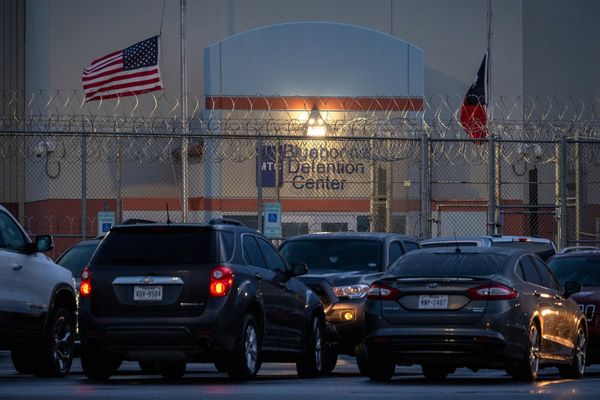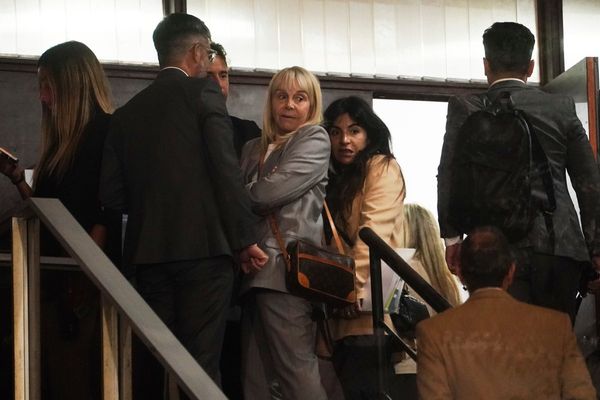
Artist Mahtab Hussain was in his 20s in July 2005, when four terrorists detonated homemade bombs in separate, coordinated suicide attacks during rush hour in London. As a young British-born Muslim with Pakistani heritage, Hussain found himself among those on the frontline of a renewed wave of Islamophobia and racial profiling in the UK. The experiences of growing up in the post 9/11, 7/7 era as a young Muslim man instilled in him a hysterical pressure “to change myself”, he says.
Five years later, in 2010, West Midlands police started putting up CCTV cameras across Birmingham – 218 cameras were installed, some of them hidden – most in majority Muslim areas of the city. Project Champion as the surveillance scheme was known, was dismantled a year later, after complaints from the community and an independent review – but the scars remain. Hussain’s exhibition What Did You Want to See? at Ikon is his visceral response to the ignominy of Project Champion, and the catharsis of coming together as a community in its wake.
The show begins by reclaiming the gaze on the community from the suspicious, watchful eyes of the state. Hussain grew up between Druids Heath and Handsworth, and clearly remembers when the cameras went up – it was the same year he picked up the camera himself. In the summers of 2023 and 2024 he returned to photograph every mosque in Birmingham. The 160 photographs mimic the surveillance images, shot at a similar distance from the buildings as a standard security camera. But these pictures don’t pry. Arranged in a Becher-like grid, they are a typology of mosque architecture and community spaces. Some are striking for their ordinariness – housed in run-down residential terraces, and in one case, a former church. It’s in those unmarked and unrecognisable sites Hussain reveals what he means by the humility and tenacity of trying to blend in. When you turn around you notice a dusty reclaimed CCTV camera in the corner of the gallery, pointing right at you.
Hussain further explores this fraught tension between being visible and being watched in a series of new portraits. He is known mostly as a portrait photographer, and this new body of work sees him shift to more classical black and white to portray individuals from Birmingham’s diverse Muslim community. Though this exhibition proves there is much more to Hussain than portraits, this is still where he excels; particularly in depicting a certain kind of machismo. One male subject in a Canada Goose jacket scowls at the camera, his mouth curled, brow arched – Hussain doesn’t try to mollify or make his subjects appear vulnerable, knowing that these portraits allow people to be what they are, or at least what they want to be.
A young man in a white vest postures and tugs at the chain around his neck, like a 90s pop idol; a labourer in black gloves lugs a tyre on his shoulder; an older man wearing a pakol hat smiles at the camera. There is no common fashion, gesture, skin tone – only their faith that joins these subjects. Perhaps the standout is Hussain’s portrait of his mother – poised with a cigarette, commanding beauty and power. Her gaze says it – I’m here to stay. At the centre of the show is a space with video instructions on how to use the mats and say the prayers provided. It is a reminder of the spaces that remain constant, the faith that is untouched by prying eyes.
If this installation looks to the future, the lyrical new film piece next door, made with the novelist and playwright Guy Gunaratne, looks back. It’s a quick-paced, lo-fi mashup of archival and new footage, influenced by Derek Jarman and Arthur Jafa, telling the story of British Asians and Muslims. The narration is cribbed from legendary British-Pakistani actor Zia Mohyeddin’s Here Today, Here Tomorrow, a film about the plight of the Asian community in Britain, made in Birmingham in the late 1970s.
There are those searing flashes again, the sting of trying to fit in: childhood footage of Hussain’s family, performing in the school nativity play. A group of Liverpool fans belt out the Mo Salah chant: “If he scores another few, then I’ll be Muslim too.” The footage moves between soaring joy and shocking brutality, between racism and resistance. A young Rishi Sunak flashes up, talking about his lack of working-class friends; a man holds up the brick that smashed his face and shop windows in a racist attack. “Some of the English hope one fine morning they will wake up and find them all gone,” the archival voice of Mohyeddin says. It’s infuriating, galvanising and overwhelming.
• Mahtab Hussain: What Did You Want to See? is at Ikon, Birmingham, until 1 June, as part of the Photoworks 30th birthday programme







